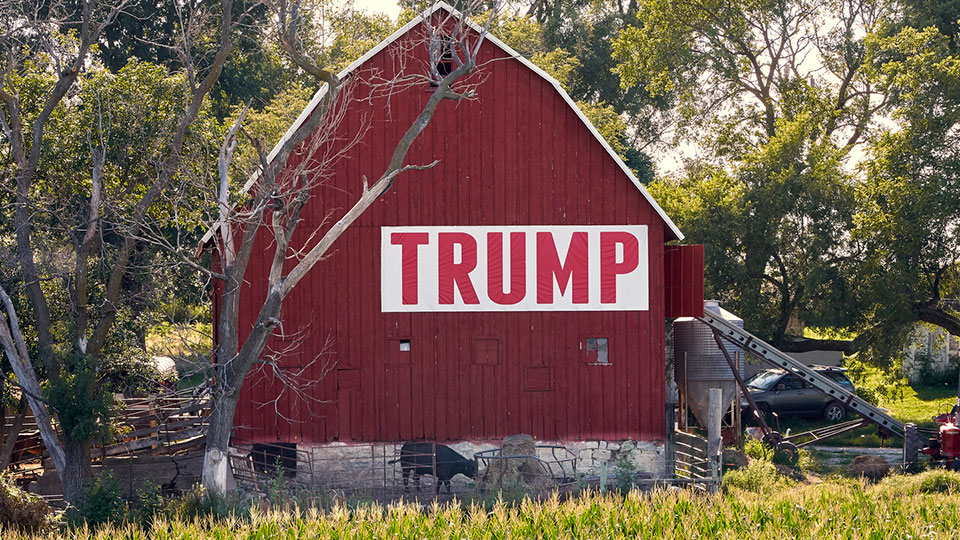
We hear these days about the importance of the African-American vote within the Democratic base, and rightly so. This base has played a key role in the Democratic primaries and, according to all indications, will play a key role in determining the Democratic presidential candidate.
Democratic candidates would also be wise, though, as well as both humane and politically responsible, to pay attention to another population that, while historically endorsing Trump, has been nonetheless largely ignored by the president, and is in dire need of attention and support. With some much-needed focus from Democratic candidates, these voters could certainly make the difference necessary to defeat Trump in key states like Michigan, Ohio, Wisconsin, and Pennsylvania.
At the same time, it is also a vital matter of standing up for the equal rights of all and serving all constituencies, making particular efforts to serve the least visible among us in cultivating a democratic society and economy.
I’m talking about rural America, which isn’t, of course, exclusively white, but which is nonetheless a white majority—and unquestionably, and more to the point, a forgotten one. Or if not forgotten, perhaps slandered as backward and racist—“deplorable” in Hillary Clinton’s fateful expression—included in a category that these days often carries pejorative connotations: The White Working Class, with the emphasis on white.
Perhaps paying attention to working-class issues as such, taking the emphasis off white and putting it on working-class, and actually speaking to this population and its concerns in a humane, understanding, and responsive way—instead of just scaring them and playing upon their worst fears and instincts—would actually make a difference.
If the Democratic platform can actually be influenced by Bernie Sanders’s and Elizabeth Warren’s campaigns and develop a politics and set of policies truly responsive to working-class America in a way it has historically failed to do, it just may attract the full working-class electorate in all its complexity.
But now is the time to recognize and speak to rural working-class Americans whom Trump has so definitively betrayed.
What is one of the latest key developments in terms of Trump turning his back on rural—and, really, working-class—America?
Trump’s Department of Education, led by Education Secretary Betsy DeVos, is up to its old tricks of cutting funding for public education and doing its best to make public education less rather than more accessible to Americans and making the nation’s public education system increasingly unequal.
These cuts are targeted to hit rural America, a typical stronghold of Trump support, the hardest.
This time, through what Andrew Naughtie, reporting for The Independent, calls “an under-the-radar bookkeeping change at the Department of Education,” DeVos’s squad is setting up over 800 public schools across the nation’s primarily rural school districts to lose thousands of dollars per school in key funding. These cuts will cost these schools everything from reading specialists, to computers, to counselors, to language lessons for non-English speakers and more. Really, we are talking about the basics.
How can these under-resourced schools offer an education equal to what students receive elsewhere in America and prepare their students to compete in our economy and make their most meaningful contributions to American society?
And what’s more, as Erica L. Green reports in The New York Times, rural schools are already, according to advocates, “the most underfunded and ignored” in the country, even though they serve nearly one in seven public school students. These students, according to a report from the Rural School and Community Trust, “are largely invisible to state policymakers because they live in states where education policy is dominated by highly visible urban problems.”
What has happened exactly?
Well, public schools have previously been able to demonstrate they qualify for the Rural and Low-Income School Program by counting the number of students who qualify for federally subsidized free and reduced-price meals in order to determine poverty rates in the schools. The Department of Education, however, recently determined that many of these schools that had been receiving funding had qualified erroneously, according to the Census Bureau’s Small Area Income and Poverty Estimates. To qualify for funds, schools must demonstrate 20% of their area’s students live in poverty. Using this census data is less accurate than actually using the data of who actually is attending a school.
The pushback against this policy move has been decidedly and firmly bipartisan. Republican Sen. Susan Collins of Maine indicated that this change would mean 100 of the 149 schools in Maine previously receiving funding from this program would no longer qualify, costing its schools $1.2 million in funding. Democratic Sen. Jon Tester of Montana underscored that 220 of its most remote schools would lose some $400,000 in funding.
The Trump administration is not making life better for our rural populations, despite the hopes of advocates that it would, given these regions’ electoral support for Trump.
Alan Richard, for example, a board member of the Rural School and Community Trust, a non-profit advocacy group, told The New York Times, “Rural education advocates definitely hoped that a president elected, in part, because of rural and small-town voters would pay more attention to rural children. Even after the last election, with all the attention to rural America, little has been done to correct the inequity so many rural students face.”
Trump can be called out for his broken campaign promises, his outright lies, and his complete lack of concern for people in need. This is well known and documented.
The real question is whether or not Democrats will listen to, pay attention to, and take up the concerns and cause of our rural populations.
Sen. Amy Klobuchar spoke to and about rural America. At times, Sen. Kamala Harris did as well. Both, of course, are no longer in the running to be the Democratic presidential candidate. Other than that, we don’t hear too much from Democratic candidates regarding rural America.
It also needs to be said that there is a tendency in Democratic politics to demonize and dismiss poor white and white working-class people in America as racist and backward, as not on board with the progressive politics of change.
Maybe listening, paying attention to, and creating actual policy to address the needs of these Americans—as opposed to dismissing them—would go a long way toward courting these voters.
It would certainly go a long way toward addressing the increasingly severe class stratifications in our society and working-class issues overall.
Will Democrats take advantage of this opportunity to serve the needs of those Trump has abandoned, address them, and cultivate their support? Is the Democratic tent big enough? Can Democrats be big enough?












Comments